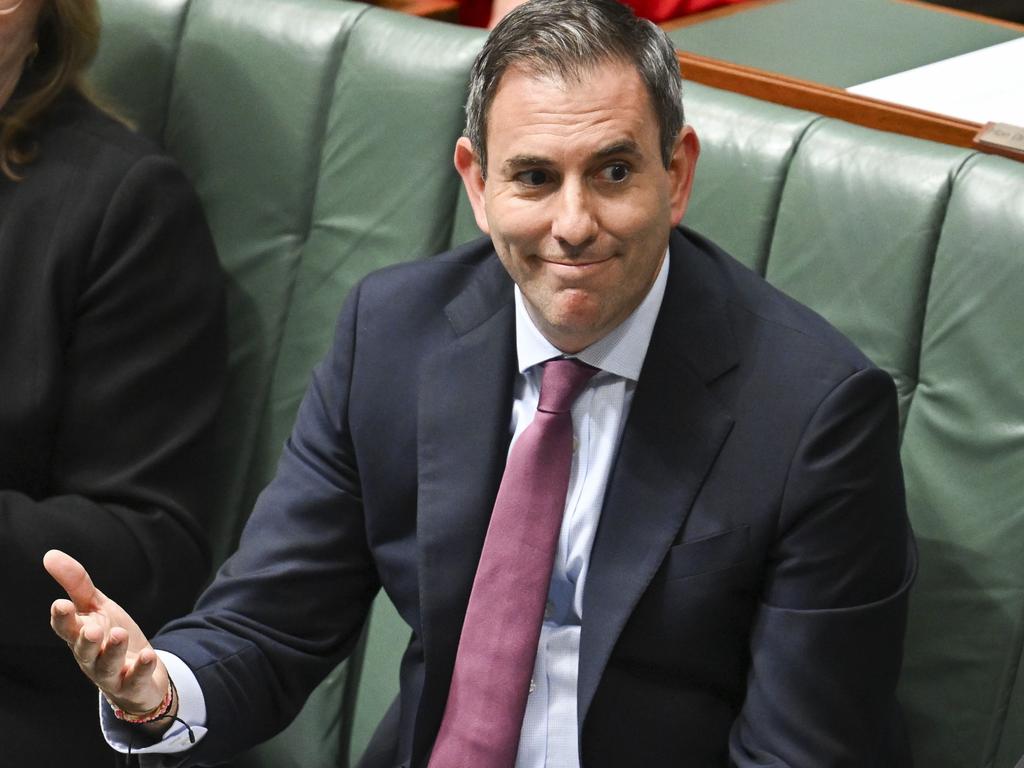
Even so, his characterisation of John Howard and Peter Costello as “unhinged and ill-informed” seemed particularly ungracious. There wouldn’t bet be a sovereign wealth fund for him to raid if Howard and Costello hadn’t established one.
Leaning on the Future Fund to invest in the energy transition is an indication that the cost of renewable energy infrastructure will be far larger than the government has had the courage to admit.
The RepuTex economic modelling Labor commissioned in opposition was well wide of the mark. It forecast $24bn of public investment would unlock $51.8bn of private capital, and that would be enough investment to get us through to 2030.

The same modelling forecast that the retail price of electricity would fall by $275 per household per year in the government’s first term. Labor should be asking for its money back, if it hasn’t already.
In the pre-Covid era, where Australian governments were constrained by budgets, a shortage of capital would have served as a reality check. Cabinets would have been obliged to reassess a government scheme’s ability to meet its objectives and measure it against other demands on the public purse, such as hospitals and schools.
Today, however, we are governed by the anointed and driven by the conceit that they have the perfect solution to every problem that can be imagined. They are people who believe their policies are not merely worth trying but are morally imperative. They are not like the socialist dreamers of old, who eventually will be forced to give up because they’ve run out of other people’s money. They have no compunction against loading liabilities on future taxpayers or extracting a larger share of wealth accumulated through enterprise and thrift.
No one in this devious and duplicitous administration is prepared to say how much money the government will need to plunder to pay for the energy transition. Earlier this year, Chalmers suggested it could be as much as $225bn by 2050, but the figure is little more than a guesstimate. Meanwhile, Labor throws up bogus figures and makes substantiated assumptions to justify its ideological rejection of nuclear power.
With Anthony Albanese and Energy Minister Chris Bowen absent from parliament last Wednesday, it fell to Deputy Prime Minister Richard Marles to construct a rational explanation for its entirely irrational policy position. He began with the claim that a nuclear generator would take 20 years to complete, a claim first made by Albanese as opposition energy spokesman back in 2006.

In fact, the mean construction time for a nuclear reactor is 7½ years, according to research conducted by Scottish energy consultant Euan Mearns. Mearns found that 85 per cent of the 441 reactors he investigated had been built in less than a decade. The four Korean-built reactors recently completed in the United Arab Emirates each took about eight years to complete. Marles’s claim is wrong.
His claim that nuclear would provide only 4 per cent of Australia’s energy is even more ludicrous. It was first made by the renewable energy lobby group, Smart Energy Council, which claims that nuclear will generate only 11GW of the 300GW it claims Australia will need in 2050.
The Council has fallen for the rookies’ error of confusing gigawatts – the amount of power that could be theoretically generated at a specific moment – with gigawatt hours (GWh), the amount generated over time. Wind and solar on average produce power for the equivalent of one working day in five. Nuclear delivers power all week. The error is compounded by including batteries and pumped hydro capacity as generation, instead of storage.
In a week rich with anti-nuclear hyperventilation, Peter Garrett shared his views with The Australian and proved that not all septuagenarian rock singers grow more sophisticated with age.
He described nuclear power as “high-risk, difficult to manage and uninsurable”. The idea that we might use it in Australia “when it has an abundance of sun, wind and flowing water is a cruel joke”.
Garrett clearly hasn’t learned the critical lesson from the collapse of the Soviet economy: that an abundance of natural resources does not translate to an abundance of goods.
Australians in parts of the country blighted by wind, solar and hydro developments understand the economic flaws of the argument somewhat better. It’s not the abundance of the energy source that counts but the efficiency of production, the mechanisms that turn inputs into outputs.

Good things could be enjoyed in abundance in the Garden of Eden, but our fall from grace has cursed us with suffering, mortality and scarcity. Generating renewable energy requires the allocation of large amounts of scarce resources for which there are alternative uses: notably land and capital.
The political class has largely ignored the pressures on land, turning a blind eye to the thousands of hectares of koala habit that have already succumbed to the bulldozers, and the thousands more that are at risk.
However, as the raid on the super fund shows, the Albanese government is acutely aware of the shortage of capital that constrains the rate at which new infrastructure can be built and connected to the grid.
The raid on the Future Fund was foreshadowed obliquely by Albanese in April in a speech to the Queensland Press Club when he spoke about progressing renewable energy by “maximising the strategic value of our government investment funds, and our national superannuation system”.
Albanese’s use of the collective possessive pronoun in relation to retirement savings is ominous. It strongly suggests he regards the $3.5 trillion distributed across more than 22 million individual retirement savings accounts as fair game.
Nick Cater is a senior fellow at the Menzies Research Centre.






Jim Chalmers is hardly the first Australian treasurer tormented by the underappreciation of his genius by the world at large.